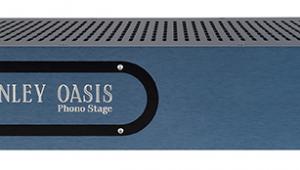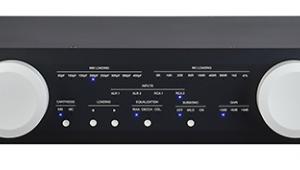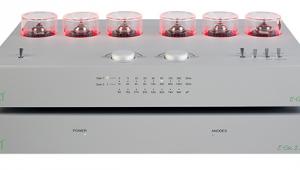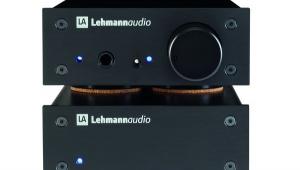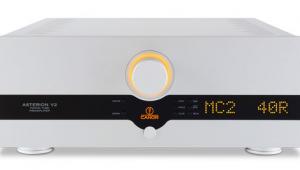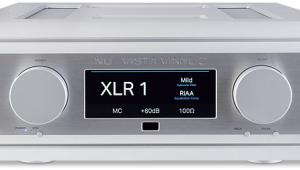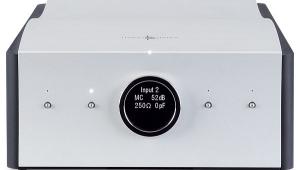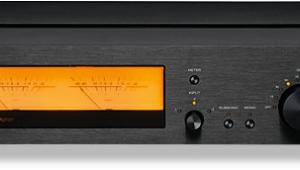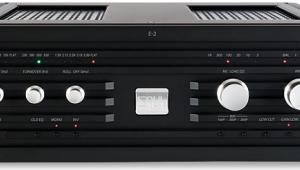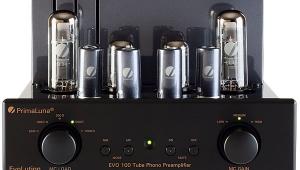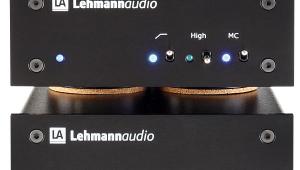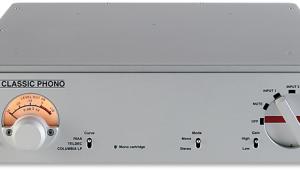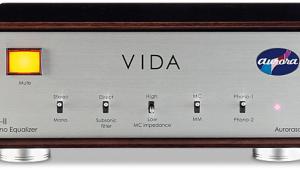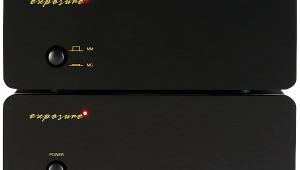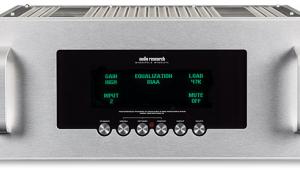Boulder 508 Phono Stage Page 2
That said, the lift in the presence region – revealed under lab test conditions – does give the unit something of a sonic character. Generally speaking, the rise has a positive effect in that it works to bring voices expertly to the fore, ensuring that every subtle vocal inflection is unveiled. As it happened, one of the first LPs used for the listening was Katie Melua's The House [Dramatico DRAMLP0016]. On the track 'The One I Love Is Gone', so vivid was her breathing between delivering the lines of the song that I could have sworn I saw my Gyro SE's acrylic base misting up.
Indeed, with any material where the performance was centred around a single instrument, the 508 would spotlight it to perfection. And this was never at the expense of instruments making up the backing track. Indeed, the 508 had an almost uncanny ability to layer performances from front to rear in a wholly convincing manner. Sara K, on her track 'All Your Love (Turned to Passion)' from her Water Falls LP [Stockfisch SFR 357.8025.1-1/2] almost appeared to be perched on my coffee table as she sang with her acoustic guitar, both bowed and electric basses cleanly defined behind her.
Real Bonus
This presence boost had its downside however, and this was revealed with brass instruments, which could sound just that little too fruity at times. 'Kozo's Waltz' by Art Blakey's Jazz Messengers from Martin Freeman And Eddie Piller Present Jazz On The Corner [Acid Jazz AJX2LP 436] was a perfect example. The trumpet and tenor saxophone require a decent 'rasp' if they're to sound convincing, but the 508 pushed both slightly over the edge into a blare that was just too forceful on occasion.
Otherwise, the 508 proved to be an enduring companion. Even on the Art Blakey track, its gloriously sweet and clean treble meant that the presentation was beyond reproach when it came to the other instruments involved. I did start the session wondering if the 508 was a little soft-sounding at the top-end. However, switching between my regular (and considerably cheaper) Anatek MC1 phono stage with a selection of different LPs revealed that the MC1 is slightly harder on sibilants, which gave the impression that they sounded crisper. Moving back to the 508 made me realise that it has a more natural presentation. It is less forced, but still incredibly insightful.

This was a real bonus when it came to classical music, where the 508 pulled each instrument during Holst's The Planets Suite with the Boston SO/Steinberg [DG 419 475-1] into its correct position in the soundstage with almost disdainful ease. Never was there uncertainty as to which instrument was taking on the majority of the work.
True Master
With other types of material things were equally as compelling, the 508 being a true master at picking out all sorts of fine details. I had the feeling, again, that the low level of noise was paying off in spades, the word 'clean' popping up all over my notes as I listened to LP after LP. The Boulder 508 can lay claim to a purity and clarity that will pay real dividends with whatever you choose.
What's more, the mid and fine treble performance was complemented perfectly by the way the unit handled bass. The 508 dug deep, with a punchy and detailed low-end that missed absolutely nothing. With simple double-bass lines, I could hear every single pluck of string, every movement of finger upon fretboard and the decay of each note through the instrument's body. And all this without the 508 ever losing sight of the overall tune. The unit may have the ability to dissect a recording with impressive precision, but it certainly knows how to put it all back together again before it reaches your ears.
Even when things became more intense, the 508 lapped it up. The ominous rumbling underpinning 'Main Titles' from the Vangelis soundtrack to Blade Runner [East West 0825646122110] powered into my room effortlessly but, once again, it never allowed the main action to be drowned out.
Resolute Performance
Switching to a moving-magnet cartridge, I repeated the test tracks only to realise that the notes I had made when using the MC designs were still spot-on. While the two different sections of a good many phono preamps often exhibit dissimilar voicing, the resemblance of the MM and MC 'halves' of the 508 was startling.
Admittedly, I had mainly been using two Ortofon models, which have a family resemblance, but the differences I was hearing were clearly down to the cartridges themselves, and their differing generators and stylus profiles. The character of the 508 remained resolutely fixed regardless of whether MM or MC was selected. Which is most impressive.
Hi-Fi News Verdict
The Boulder 508 is an easy phono stage to recommend. It boasts clarity, low noise and a consistency across MM and MC that makes it a hugely enjoyable listen. If there's a drawback it's that there are other phono stages offering greater flexibility at a lower price, but if the features here cover your needs then the 508 should be high on your 'must hear' list. Simplicity and purity are its watchwords.

